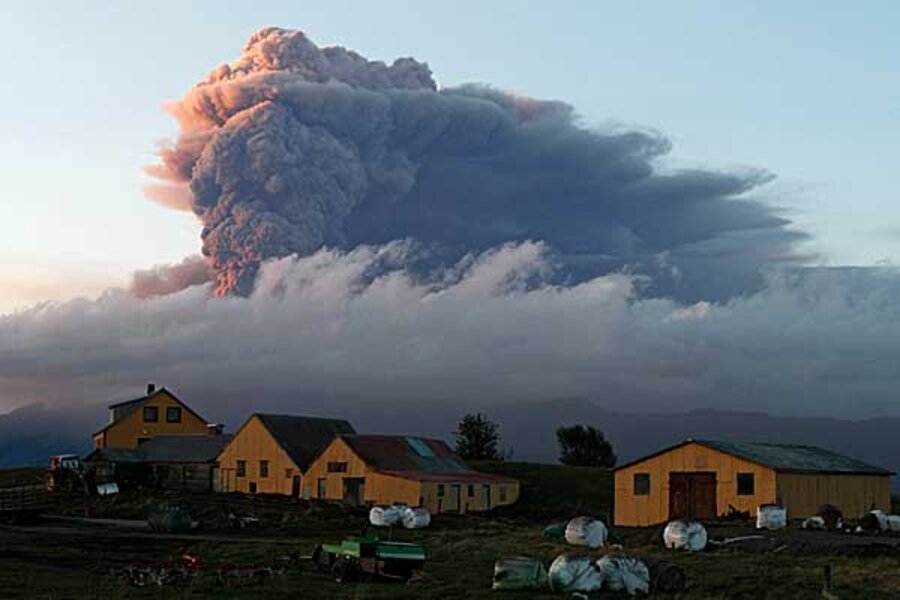Volcanic ash cloud: Is eruption of Eyjafjallajökull over?
Loading...
| Boston
Eyjafjallajökull is shrinking.
During the past two months that the Iceland volcano was creating an ash cloud over Europe and erupting magma, it was also slowly "deflating" to the point that it has now shrunk several centimeters in size, says volcanologist Bryndís Brandsdóttir of the Institute of Earth Sciences at the University of Iceland.
"It's like a balloon," she says, explaining that the volcano inflates with magma and then deflates as magma is released.
"At present, it seems to be contracting, indicating that there is no more magma," says Ms. Brandsdóttir, who has monitored the volcano for two decades. It began filling with magma in 1991, she says, and it will likely need to refill with magma before it again erupts. The Institute of Earth Sciences attempts to monitor magma flow.
"They erupt once their magma chambers have refilled, basically," she says. "The same thing may occur in Eyjafjallajökull, but it depends on the availability of magma from the mantle."
The Institute of Earth Sciences and the Icelandic Meteorological Office detected no ash or magma at Eyjafjallajökull (pronounced ay-yah-FYAH-lah-yer-kuhl) on May 24 or May 25. The temperature inside the crater had dropped to 100 degrees Celsius on Monday, meaning the volcano was producing steam rather than magma and ash.
“The eruption seems to be dormant,” according to the Icelandic Meteorological Office.
London's Met Office, Britain's national weather service, warns that this may merely be a pause. The last time Eyjafjallajökull erupted, in December 1821, it continued off and on until January 1823 – about 14 months.
“Volcanologists and Geologists term this quieter spell of volcanic activity as a ‘paused’ phase. However, it is typical for a volcano like this to have several ‘pauses’ as part of its overall eruption phase. Only when the volcano has been ‘paused’ for three months will it then be regarded as being dormant,” the Met Office says in Monday's weather report.
Complicated plumbing
However, Ms. Brandsdóttir says that Eyjafjallajökull is acting unique from its 1821 and 1612 eruptions. In both of those instance, the volcano solely erupted from the top. But this time, in March, it initially erupted from its eastern side before its top erupted in April. She says the "internal plumbing" of the volcano affects how – and how long – it erupts.
"Imagine a vertical pipe and then a subsidiary pipe to the side – it first erupted to the side, and then the main pipe went active," she says. "It's quite complicated inside and different types of magma are coming out from different sides."
Tonight’s "Dan Rather Reports" travels to Iceland to report on the effects of Eyjafjallajokull. The volcanic ash is coating nearby farms and destroying grazing fields. Of greater worry, the report finds that as the glaciers melt with the Earth's rising temperature, the Earth's surface temperature slowly rises as a consequence.
This can lead to increased production of magma and more frequent volcanic eruptions.
Of course, Eyjafjallajökull has a volcanic sister, and no one knows whether Katla may now awaken.
Related:





